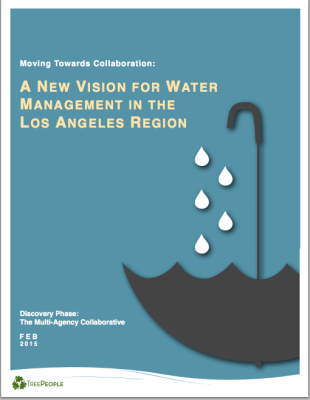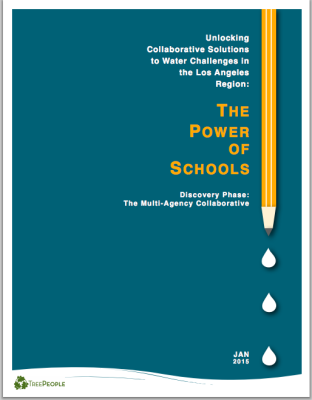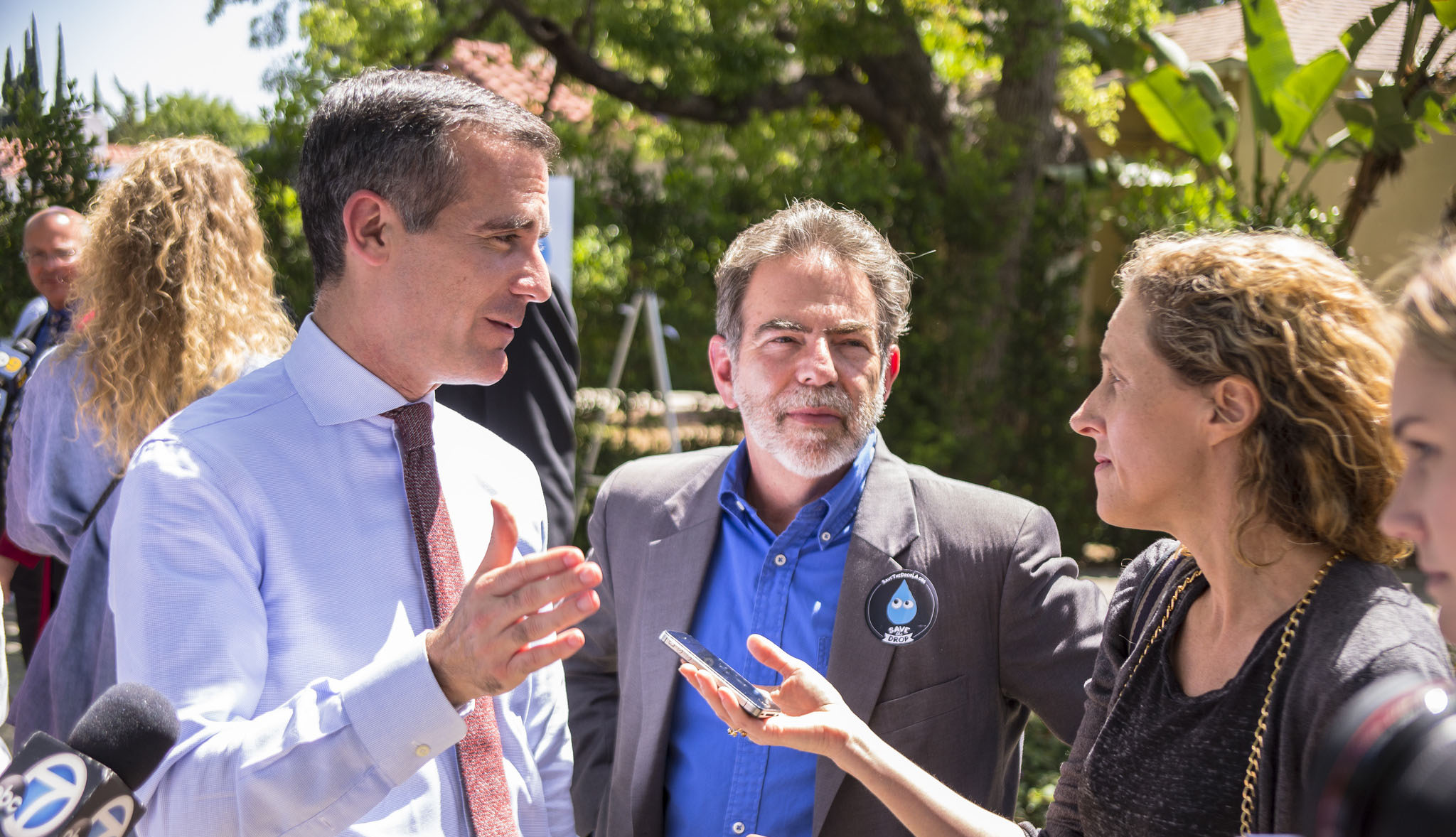TreePeople Releases Two Promising New Reports


This historic drought is driving a thirst for solutions, and government agencies are responding with an openness to work together as never before. Over the past year, TreePeople has facilitated an exciting exploration of “collaborative governance” among agencies for innovative water management in the Los Angeles region. Our partners in this effort are the Los Angeles Department of Water and Power, the City of Los Angeles Bureau of Sanitation, and the Los Angeles County Department of Public Works. Together, this Multi-Agency Collaborative has forged a promising start on envisioning and outlining a new way of governing. The timing couldn’t be better.
Two new reports on the findings and recommendations of this work are now available online:
The Context
The LA region’s challenge with drought is exacerbated by myriad water-related needs: replacing aging infrastructure, developing a clean, reliable local water supply, meeting stormwater pollutant reduction requirements and developing climate-resilient systems. As we face these growing pressures, public tax fatigue has grown, and with it a decrease in support for essential investments, including the 2013 LA County “Clean Water, Clean Beaches” Measure.
The Potential
With TreePeople’s support, the Multi-Agency Collaborative has made a promising start on envisioning and outlining a new way of governing. Together, we have conducted an exploration of how the agencies could work together to reap the benefits and from more integrated, collaborative water management: a “Whole Water Cycle” approach.
As TreePeople’s President Andy Lipkis explains, “When we built our cities, we replaced natural systems with segregated bureaucratic systems, and constructed infrastructure to manage each ecosystem component separately. Specific regulations, funding sources, and departments now manage each of nature’s sectors. However, when we integrate solutions, the ecological, economic, and social benefits emerge.”
Key Findings Overall
• The region stands to benefit from creating a shared vision, defined goals, and coordinated strategy managed across agencies through mutually reinforcing activities.
• Distributed stormwater capture is a critical strategy toward building new long-term local water supplies.
• There is a unique and unprecedented opportunity to rapidly make critical shifts in our local water management systems due to the current financial, regulatory, and political environments.
• Annual stormwater costs to City and County agencies are projected to increase to at least $2B annually – or six times the existing costs.
• The barriers to collaboration while manifold, are solvable (watch this blog for more details on how that can be done).
“Los Angeles Unified School District Water Partnership” Concept
In addition to building the case for a collaborative governance approach in the Multi-Agency Collaborative delved deeper into one innovative concept: the LAUSD Water Partnership concept. This approach, allowing for increased stormwater capture projects on Los Angeles Unified School District campuses, would simultaneously increase the region’s water security while creating a pathway for major public investment in greening and cooling campuses for LA’s school children.
Key Findings
• By investing a portion of the anticipated two billion dollars needed annually for stormwater cleanup into greening and rainwater harvesting on school campuses, we can realize significant gains for our children.
• LAUSD’s concerns about accepting off-site stormwater can be successfully addressed and overcome.
• An unprecedented opportunity exists to create a shared vision, defined goals, and a coordinated strategy for the Los Angeles region.
For more information on TreePeople’s Collaborative Governance Initiative and policy-related work visit www.treepeople.org/about/policy.

